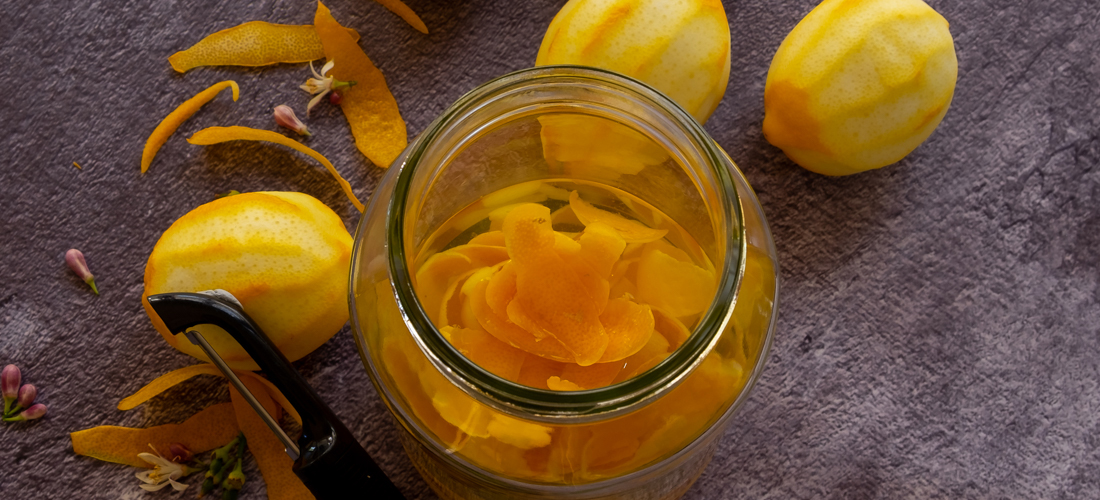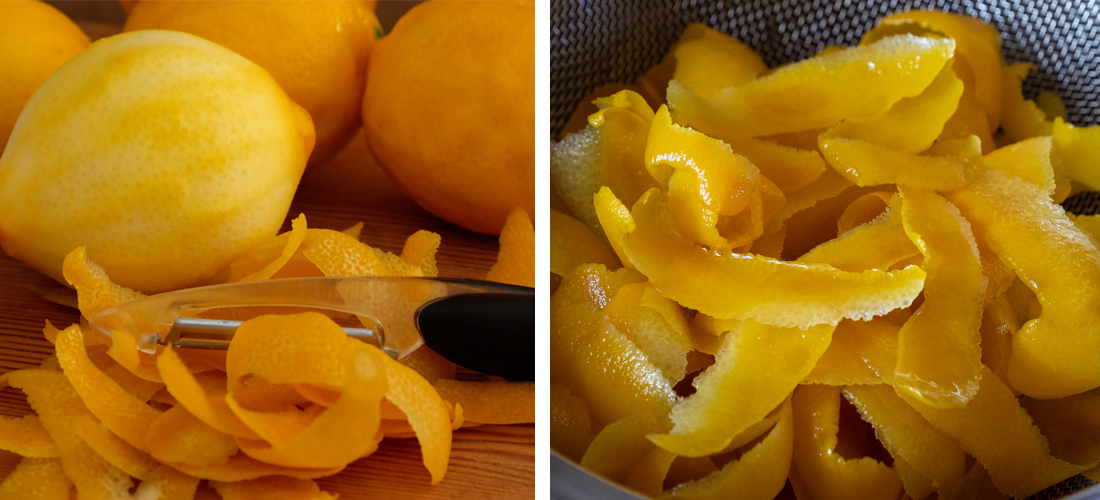Limoncello
- Liqueurs & Liqueured Fruit

In hot Mediterranean climates the endless summer heat can be relentless, but an icy cold Limoncello poured straight from the freezer revives the spirit and awakens the magic of the evening. This traditional Italian digestive is very easy to make. There’s very little preparation and no difficult techniques to master. For most of the time it steeps away quietly in a jar, drawing out the complex lemon flavours and then socialises with the vodka base to produce its captivating characteristics.
Keep it in the freezer and serve icy cold in clear glasses so you can appreciate the colour. Serve with Italian panforte biscotti biscuits as an after-dinner drink to aid digestion, splash on fruit salad or ice-cream or just enjoy it as a heat- relieving tonic. Homemade Limoncello and Limoncello Marmalade makes a perfect gourmet gift.
- Preparation Time:
- Maceration time 2 x 20 days
- Cooking Time:
- 10 minutes
- Quantity:
- 2 x litre bottles
PREPARATION
Maceration Stage: Sterilise 2.5-3 litre wide rimmed sealable jar
Bottling stage: Sterilise 2 x 1 litre sealable bottles and lids

INGREDIENTS
- 9
- Lemons, medium
- 750 ml
- Vodka
- 750 ml
- Water
- 575g
- Sugar, white
METHOD
Maceration Stage 1
Lightly scrub the fruit skin to remove any garden debris or wax if they have been commercially grown.
Using a vegetable peeler, peel the lemons using downward strokes from the top to the bottom of the fruit. Place a piece of peel, skin side down on a chopping board, and remove as much of the pith as possible. Repeat the process until the pith has been removed from all the peel. Put the peeled lemons aside as they will not be used in this recipe. Refer to the Notes section below on how they can be used.
Place the peel in a large sterilised 2.5-3 litre sterilised wide-rimmed jar.
Cover with vodka, seal tightly and leave to macerate in a cool dark place for approximately 20 days.
Maceration Stage2
On day 20, make a sugar syrup by placing the water and sugar in a saucepan. Bring to the boil and simmer to dissolve the sugar. Remove any scum that forms on the top of the syrup.
Allow to cool completely, then add to the lemon-rind vodka base.
Seal tightly and leave to macerate in a cool dark place for another 20 days.
Bottling Stage
Line a strainer with fine muslin or filter paper. Add the vodka base and allow it to strain through to remove the rind and any fine lemon particles.
Pour into sterilised storage /presentation bottles, seal, and label.
NOTES
- To wash the fruit, I use a pair of Skruba’s vegetable gloves. These are a wonderful invention and their slightly course material magically cleans fruit and vegetables with the greatest of ease. Easy to wash and dry they are an indispensable item in the kitchen. Special thanks to my very dear friend Sue who found them in a cookware shop. Alternatively use a small soft bristle vegetable scrubbing brush.
- Use the best quality vodka that you can afford as this will influence the smoothness of the final Limoncello.
- Allow the maceration to take place undisturbed and out of sunlight for the specified times.
- For each maceration stage, write on the jar the preparation date and date for the next stage. Every time you pass the jar you will be reminded of the due date to start the final stage instead of relying on your memory.
- Do not skip the fine filtering stage as it is important to remove all tiny particles to have a clear liquor.
- Peeled lemons can be used to make lemon cordial, lemon curd, add to multi-fruit marmalade such as 3 Fruit or 4 Fruit Marmalade, or dry them and then vitamise with sugar or salt to make a distinctive lemon flavouring. This eadymade accompaniment can be used to garnish desserts or cocktail glasses.
